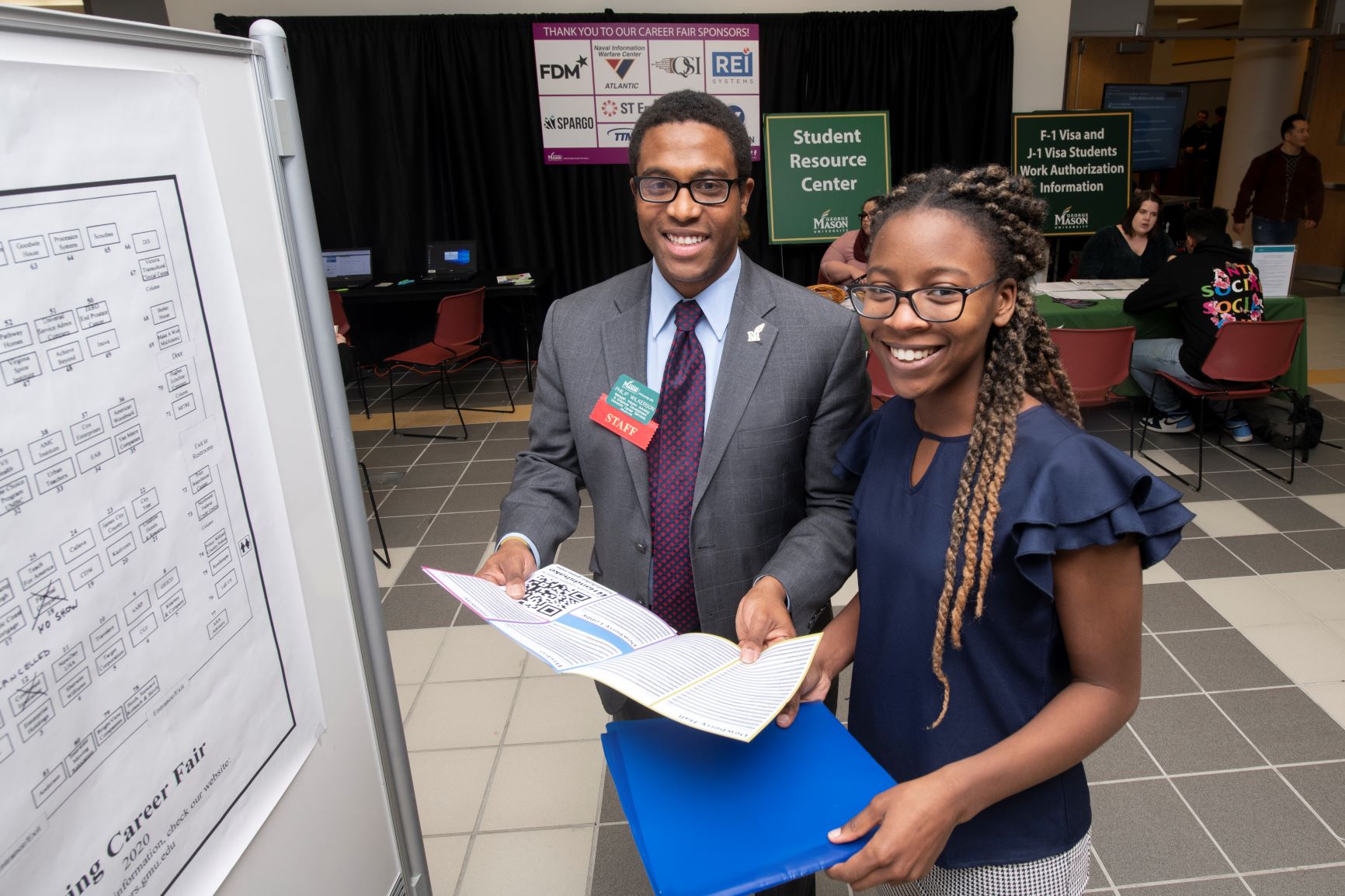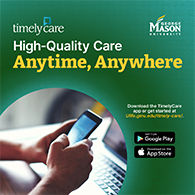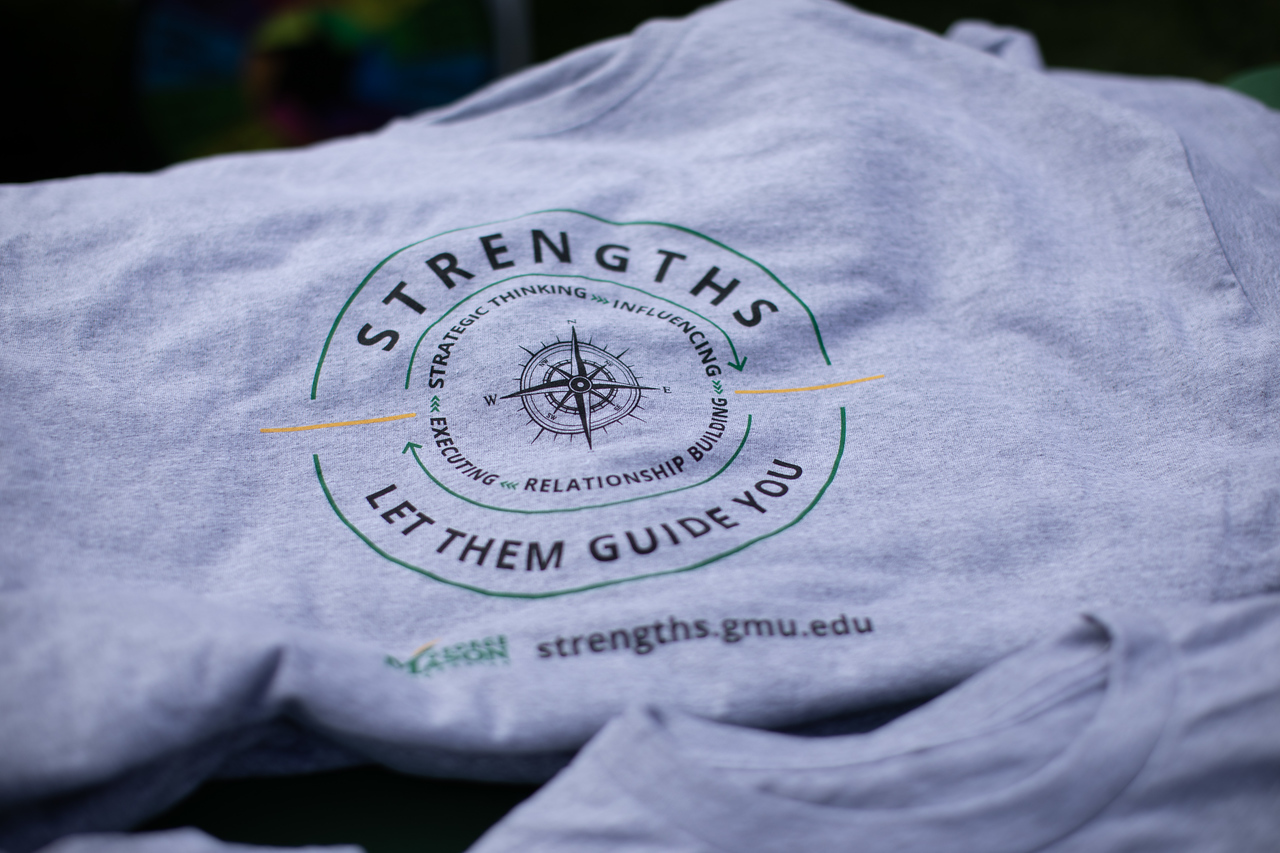By: Stacey Ellis, Faculty and Staff Engagement Program Manager, Human Resources
“It can be tempting, in our goal-oriented society, to push ourselves beyond our capacities in pursuit of success. But when we do this, we tell ourselves that our work is more important than our own health. Without our health, our success means nothing. No promotion, no raise, no accolade will mean anything if you aren’t happy and healthy.” – Olivia Kram
Burnout can affect us all if stress piles up in our lives. We each have our own ways of managing stress, according to our unique personalities and circumstances. When we understand what our strengths are, those strengths can become powerful tools for us to overcome burnout and thrive at work. Gallup has partnered with Mason to provide a free CliftonStrengths assessment for students and employees. Here’s how to use your CliftonStrenghs to overcome burnout.
What the Research Shows
According to the World Health Organization, “burnout is a syndrome conceptualized as resulting from chronic workplace stress that has not been successfully managed. It is characterized by three dimensions: feelings of energy depletion or exhaustion; increased mental distance from one’s job, or feelings of negativism or cynicism related to one’s job; and reduced professional efficacy.”
Burnout is a result of organizational and work activity characteristics, including an unmanageable workload, unfair treatment at work, unclear communication from managers, lack of manager support, and unreasonable time pressures, along with individual characteristics such as coping mechanisms and personality traits. A Gallup survey showed that 28 percent of employees expressed being burned out at a high rate.
Preventing and combating burnout requires both individual and organizational-level strategies. At an organizational level, supervisors can promote a culture of well-being, listen and support team members with work/life related needs through meaningful conversations, communicate clearly and tailor communication preferences, set clear expectations, and use individual Strengths and complimentary partnerships to enhance work performance and efficiency.
As an individual, focusing on coping strategies that best fit with CliftonStrengths can be effective in minimizing feelings of burnout. In a 2022 Gallup Burnout study, more than 3,000 employees provided insight on coping strategies that helped them feel more productive when they were frustrated or overwhelmed with their jobs. The study showed that common coping strategies were consistent with each individual’s dominant strengths, yet these strategies were not always the most effective. Therefore, Gallup developed the “Instinctual vs. Recommended” burnout strategies for each of the four CliftonStrengths domains.
According to the Gallup study, those dominant in the Executing domain instinctually exercise or engage in physical activity or get back to work quickly as preferred burnout coping strategies. While exercise results in an average 20 percent decrease in burnout symptoms and returning to work results in a 15 percent change in symptoms, the recommended strategies showed a more significant impact. For the Executing domain, Gallup recommends finding the positive in the current work situation (a 46 percent decrease in symptoms) and stopping to think through the situation (a 48 percent decrease in symptoms).
Influencing dominant individuals instinctually spend time with family and friends outside of work (a 34 percent reduction in symptoms) and think about how their work contributes to future goals (a 28 percent reduction). Recommended strategies include exercising (a 48 percent decrease) and thinking about how similar situations have been approached before, which the study shows results in a 41 percent decrease in symptoms.
While it is instinctual for those dominant in Relationship Building, thinking about how colleagues may feel about a situation resulted in a 35 percent increase in symptoms. For those with relationship-building strengths who naturally think about how their work affects others, the study observed a 13 percent decrease in symptoms. Gallup recommends thinking about how similar situations have been approached previously (a 43 percent decrease in symptoms). Relaxation and mindfulness exercises are also recommended for those dominant in relationship building, as they resulted in a 33 percent decrease in symptoms.
Finally, those dominant in Strategic Thinking tend to stop to think through their situation (a 16 percent decrease in symptoms) and take more breaks in the workday to relax (a 21 percent decrease). Gallup, however, recommends thinking about the current situation as a challenge to find a way to succeed (resulting in a 42 percent decrease in symptoms) and spending more time with family and friends outside of work (a 34 percent decrease).
How to Choose Your Coping Strategies Well
Gallup’s recommended coping strategies may have a more significant impact on burnout symptoms, employee engagement levels, and overall well-being. We can cope with burnout well by choosing the coping strategies that work best for us, according to our distinctive mix of CliftonStrengths. As we reflect on our individual CliftonStrengths and Gallup’s recommended coping strategies for dominant domains, we may discover that using coping strategies from several domains works best for us.
Personally, my top three CliftonStrengths are Achiever, Learner, and Responsibility. With the Executing domain domination, I can easily lean toward overworking and placing demands upon myself to continue until I accomplish everything on my to-do list. However, we all know that the to-do list never ends!
My instinctual coping strategy is to exercise. While I feel great after I exercise and it helps to clear my mind, I may end up considering exercise as just one more achievement for the day. While I will undoubtedly continue to exercise for health and wellness, the Gallup research has encouraged me to further reflect and take on new coping strategies that will enhance my overall well-being. When my Achiever dominates and I’m feeling overwhelmed with my to-do list, I will lean into Gallup’s suggestions of thinking positively and stopping to think through the situation before moving to accomplish my tasks. I am actively working to avoid burnout with this mindset shift and the support of my supervisor. It gives me the ability to draw a clear connection between my work and my organization’s mission and vision. It also helps me focus on making engagement and well-being a priority, as well as using individual coping mechanisms regularly.
I encourage you to reflect on your top five CliftonStrengths and try new strategies to minimize burnout symptoms. May you all be well!
Additional Resources
- How to Overcome Burnout with Strengths
- Prevent and Overcome Burnout: A Strengths-Based Guide by Gallup
- Mason Strengths Workshops
Write one of these Thriving Together Series features! We’re looking for contributions on all topics related to well-being. Read other Thriving Together Series articles here and contact us at [email protected] for guidelines. Thank you for helping our Mason community thrive together online!






















